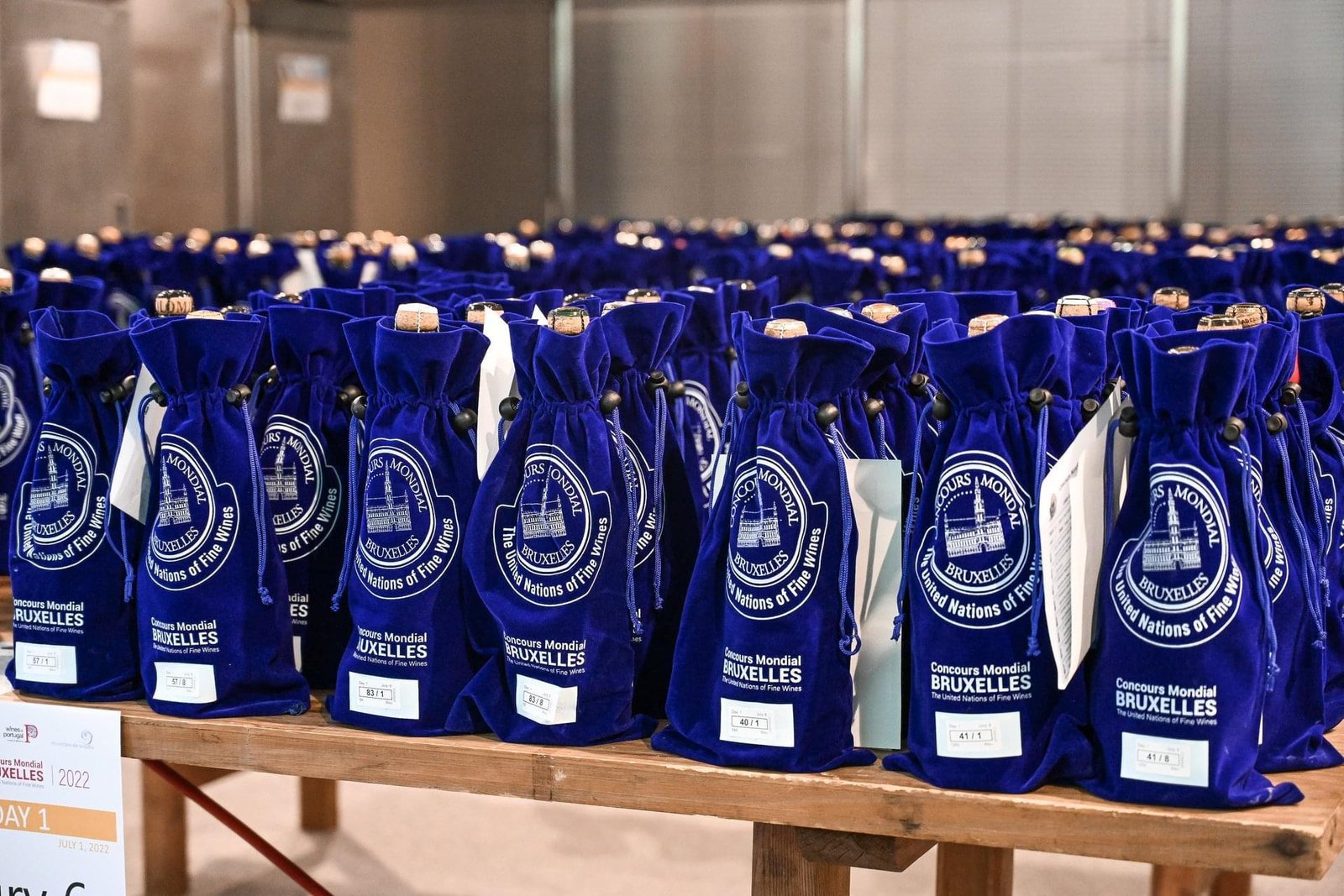
Увага! На сайті використовуються cookie файли.
The site uses cookie files
Даний сайт має вікове обмеження.
This site has age restrictions!
Я підтверджую, що мені, на жаль, давно виповнилося 18 років
Only in 2023, Ukrainian wines have won more than 150 medals from various international competitions, evaluated and awarded by wine professionals and experts from around the globe. We do believe that these numbers will grow in 2024, especially now that every year we witness the growth in quality of Ukrainian wines.
The range of wine competitions is really wide, so what differs one from another? Drinks+ decided that the best way to find that out is to talk to insiders. Victoria Makarova‘s interview with Thomas Brandl, the representative of Concours Mondial de Bruxelles for Eastern and Central Europe and owner of xenos-comm, is, hopefully, one in a row, providing useful insights to Ukrainian winemakers.
How did your career wir CMB begin? I am sure there‘s an interesting story behind it.
Yes, indeed, there is. Back in 2007, during my time as Communication Director of Stuttgart International Trade Fairs, I was invited as a judge to a national wine competition in Chile. That was the time when I met Baudouin Havaux, the Chairman of Concours Mondial de Bruxelles. We are the same age, we had (and still have) a lot in common — as you may know, wine is connecting people. Baudouin had a “campo” in the Maule region of Chile, and he invited me to spend a few days in his country house. A year later, in 2008, the Chilean competition was already co-organised by CMB, it took place in Valparaiso — I was invited to join the jury. And in 2009, I found myself as panel chair of the big CMB in Valencia / Spain. Since then, I do this every year. In 2012 I became the official CMB Ambassador for Germany, Austria and all Eastern European countries.

So you are currently working with lots of so-called „emerging“ wine regions. Which of the recent years’ discoveries you would call the most impressive ones, and why?
During my 14 years at Messe Stuttgart the winemaking of Eastern Europe was my focus. We did many presentations and press conferences for the Intervitis vitivinicultural technology trade show to attract visitors to Stuttgart. When I started my own PR agency xenos-comm in 2011, I continued working in this field. I helped wine countries like Georgia, Moldova, Bulgaria, Romania and North Macedonia to gain visibility in Central Europe, as well as Turkey and Greece. Recently I started a collaboration with Wines of Armenia, and every now and then I’m helping my Ukrainian friends a bit as well.
In the last few years, Ukraine and its wines have probably been the biggest surprise years for me. I didn’t expect such a quality revolution in Ukrainian winemaking within such a short time — and especially during the on-going russian aggression in Ukraine.
You are well familiar with Ukrainian wines. Which categories could be the most relevant for the range of CMB competitions and have better chances to win medals?
So far, I think your chances are better with white wines and sparklings. Odesa Black (the famous local red) can deliver very powerful, spicy red wines. But sometimes I find them a bit rustic. The indigenous Telti-Kuruk or the local Sukholimansky are very interesting white varieties in my opinion. Of course, there are better and better Merlot and Cabernet Sauvignon produced in Ukraine as well, the question is, however, are the export markets waiting for them…? There is already a global oversupply with the wines made of these French varieties.
Ukrainian wineries have already participated in CMB and won some medals. What would be your recommendations to those who are planning to do it for the first time? Is there a “must do” checklist, maybe?
No, there’s no “must do” checklist. But, of course, as Concours Mondial regulations are the strictest in the world, only top quality wines should be sent there. We follow the rules of OIV with maximum 30% medal awards, unlike, for instance, some British competitions, where 80% of all participating wines get medals. I don’t think flooding the world with medals is a very serious business behaviour, to me it seems more like a “money printer”. Each producer should be aware of the value of his medals obtained in a competition where 4 out of 5 wines are getting one. This may not be so obvious to the consumer, but definitely clear to the expert community.
To be awarded at the “big” CMB for red and white or the specialized editions for Rosé, Sparkling and Sweet wines might not be as easy, but the producers can be sure that their accolades at CMB do count amongst the best wines in the world. And the organizers do a lot to promote the award winning wines and wineries globally.

Could you tell us a bit more about the special features of Concours Mondial de Bruxelles? What makes it different from other international contests?
CMB defines itself as the “United Nations of Fine Wines”. No other competition in the world has such an international tasting panel, with people coming from over 50 countries and from all continents. There are other important competitions, for example in Germany and the UK, but, as far as I know, the tasters there are mainly German or British.

Another distinctive point is the cooperation with the University of Louvain in Belgium for statistics and the “quality control” of our tasters: every day they are tasting the same wine twice blindly without knowing it – and if their scoring differs remarkably, they will have a problem.

So CMB has a mechanism regulating the number of medals granted to the participants. How does it work, practically?
We follow the 30 percent rule strictly. When the tasting sessions are over, our IT system does the necessary corrections of scores to remain within the 30 percent frame. This may result in some wines getting into a “small silver” range, meaning they are within the general “silver” score, but not winning a medal.
Sounds tough. Considering the strict evaluation procedure, what are the most meaningful advantages the participants are getting from your competition? And what are the benefits for those who don‘t win the medals?
As I already mentioned, 50% of our tasters are international journalists, another 15% are international buyers and importers. The award-winning wines very quickly raise the public awareness of the producers. Just to give you an example: in 2022, 3 days after winning the trophy of the Best Red Wine in Show, a wine from Moldova was completely sold out! It was the first time that a wine from Eastern Europe won this award at CMB. In 2023 another red wine from Bulgaria followed, with a similar success rate.
All participants, including those who do not win medals, receive an elaborated sheet with the details of the tasting panel, comments from tasters, and the aroma profile of their wine, which they also can use for their marketing purposes.

The wine map of the world has been expanding in the last 10-15 years. How did that influence your competition (participants, judges)?
Since I began to work for CMB the number of samples submitted by wineries from Eastern European countries have more than quadrupled! This goes hand in hand with the quality revolution we have been witnessing there recently. Of course, the number of tasters from Eastern Europe has risen at the same speed. Many of them do a very good job and have become important members of the big CMB family, some of them also serving as panel chairs. I’m very happy about this evolution!
There is a certain stereotype among the participants: if a contest is held in Germany / Italy / France / the UK, it focuses mainly on the buyers and consumers of that country. Do you think it’s true? And what are the core “markets of influence” for your competition?
I think this perception is quite true. If producers are targeting merely the German market, they are in good hands at Mundus Vini. If they are interested in the British market, there are several competitions to be considered there. The competitions in France, Italy and Spain are heavily dominated by national producers and judges. CMB is actually the only international event which travels every year, thus exploring new wine regions and countries and putting them on the global winemaking map. The biggest number of samples are submitted by the winemakers of France, Italy, Spain and Portugal, followed by Eastern Europe in the meantime.
Our recent creation of “Wine Bars“ and “Wine Corners by CMB” in important global cities like Mexico and Tokyo in combination with our new collaboration with United Airlines and their Business Lounges offers CMB medal winners unbelievable marketing possibilities in the future – all around the world!
In 2023 we surpassed the former Iron Curtain for the first time, when we organized CMB in Slovakia. In 2016 we were in Plovdiv, in 2020 in Brno, in 2023 in the Croatian Poreč. Why not come to Odesa one day, when this horrible russian aggression is history? I’d love to realize this dream…

***************
The CMB Red & White Wines Session will take place in the city of Leon, Estado de Guanajuato, Mexico, on June 7th, 8th, and 9th. This is the first time the competition will be held in North America. The State of Guanajuato has a rich winemaking history that dates back five centuries.
More details about CMB sessions and registration can be found here:
Sweet And Fortified Wines Session
IMPORTANT INFO: on the request of Wines of Ukraine, the CMB organizers are offering Ukrainian participants a 20% discount for submitting their samples, valid for all tasting sessions in 2024. For further details and promo code, please contact Wines of Ukraine team at info@ukr.wine.
Photos: Thomas Brandl, Concours Mondial de Bruxelles
27.11.2025